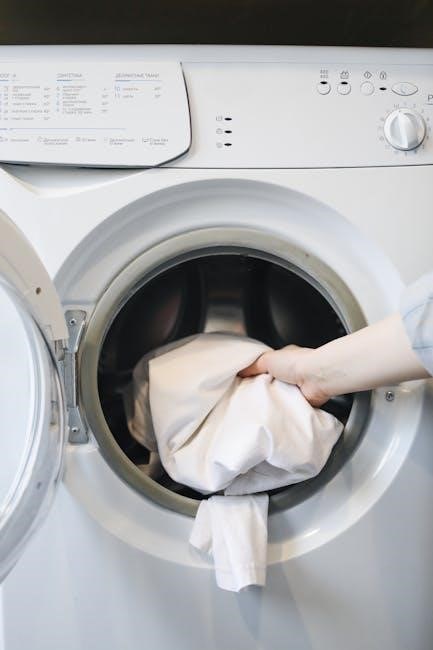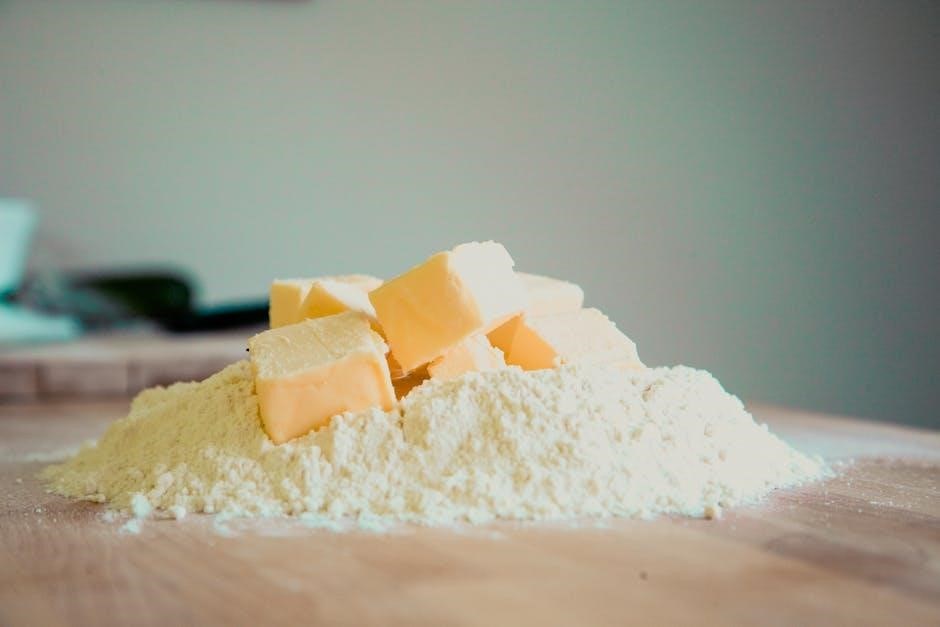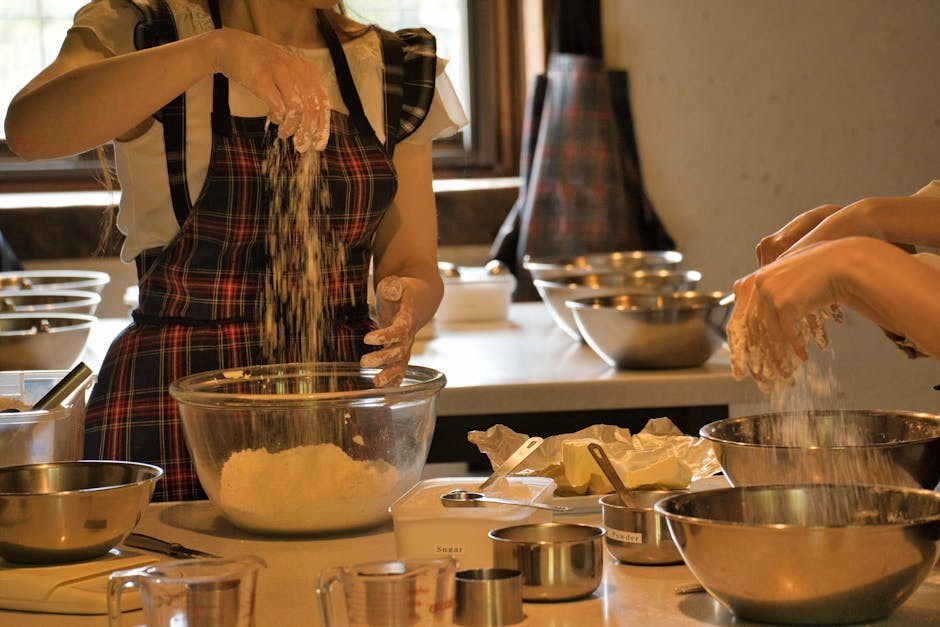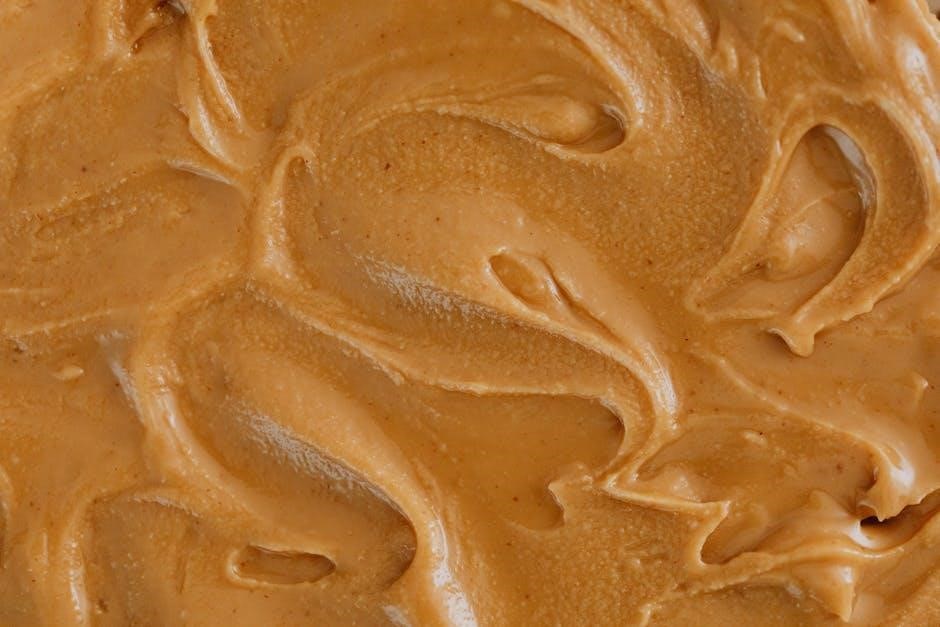manual butter churner
A manual butter churner is a traditional kitchen tool that simplifies making fresh homemade butter. It typically features a glass jar and a handle for easy churning.
1.1 What is a Manual Butter Churner?
A manual butter churner is a kitchen device designed to make fresh butter at home. It typically consists of a glass or stainless steel jar, a churning mechanism, and a handle. Users add heavy or whipping cream, then turn the handle to agitate the cream until butter forms. This traditional tool offers a simple, hands-on method for creating homemade butter with minimal effort and time.
1.2 Benefits of Using a Manual Butter Churner
Using a manual butter churner offers convenience and simplicity for homemade butter. It allows for fresh, high-quality results with minimal effort. The process is quick, typically taking less than 10 minutes, and provides control over ingredients. It’s cost-effective, customizable, and fun, making it ideal for home baking and cooking. The manual design ensures ease of use and a rewarding experience for kitchen enthusiasts.

History and Evolution of Butter Churners
Butter churners have evolved from traditional shaking methods to modern manual designs, incorporating durable materials like stainless steel and glass for efficient churning.
2.1 Traditional Methods of Butter Making
Traditionally, butter was made by manually shaking cream in containers, a labor-intensive process requiring patience and effort. Early methods involved agitating cream in animal stomachs or wooden churns until butter formed. This time-consuming technique was essential for producing fresh butter before modern tools like the Kilner churner simplified the process with glass jars and handles for easier churning.
2.2 Modern Design Improvements
Modern manual butter churners feature improved designs, blending tradition with convenience. They often include glass jars, stainless steel gears, and ergonomic handles for easier churning. These designs reduce effort and time, making butter-making more accessible. The Kilner churner, for instance, combines durability with style, offering a user-friendly experience and easy cleaning, while maintaining the charm of homemade butter production.
Design and Components of a Manual Butter Churner
A manual butter churner typically consists of a glass or stainless steel jar, a churning mechanism, and a handle. Its compact design allows for easy operation and cleaning, making homemade butter production straightforward and efficient for both small and large batches.
3.1 Materials Used (Glass, Stainless Steel, Wood)
Manual butter churners are often crafted from high-quality materials like glass, stainless steel, and wood. Glass jars offer visibility and ease of cleaning, while stainless steel gears ensure durability and hygiene. Wooden handles provide a comfortable grip and classic aesthetic. These materials combine to create a durable, easy-to-use, and visually appealing tool for homemade butter making, ensuring both functionality and longevity.
3.2 Capacity and Size Options
Manual butter churners come in various sizes to suit different needs. Common capacities range from 1 liter to 1.5 liters, with some models offering larger volumes for bulk butter making. Compact options are ideal for small batches, while larger churners cater to families or professional use; The size options ensure efficiency, whether you’re making butter for daily use or special occasions, with designs that balance functionality and storage ease.
3.3 Churning Mechanism and Handle
The churning mechanism in manual butter churners typically features a stainless steel gear system that efficiently agitates the cream. The handle, often made of wood or durable materials, provides a comfortable grip for easy turning. This design ensures smooth operation, allowing users to churn butter quickly and effortlessly. The mechanism is usually attached to the lid, making the process straightforward and effective for fresh, homemade butter production.
How to Use a Manual Butter Churner
Pour room-temperature heavy cream into the churner, attach the lid, and turn the handle. Churn for 8-10 minutes until butter forms. Stop, drain, and rinse for fresh homemade butter.
4.1 Step-by-Step Churning Process
First, pour room-temperature heavy cream into the churner. Secure the lid tightly and begin turning the handle steadily. Within minutes, the cream will thicken into whipped cream, then form clumps. Stop when butter solids separate. Drain the buttermilk, rinse the butter with cold water, and press out excess liquid. Your fresh homemade butter is now ready to use or flavor.
4.2 Tips for Achieving Perfect Butter
For ideal results, use high-quality, room-temperature cream and churn steadily. Avoid over-churning, as it can make the butter too dense. Once solids form, stop and drain the buttermilk. Rinse with cold water to remove residual liquid. For extra flavor, add salt or herbs after churning. Proper handling ensures a smooth, creamy texture and enhances the butter’s freshness and versatility in various recipes.
Benefits of Homemade Butter
Homemade butter offers freshness, healthier ingredients, and customization. It allows control over added salts or flavors, ensuring a tastier and more natural product for cooking and baking.
5.1 Healthier Ingredients and Customization
Homemade butter made with a manual churner allows for full control over ingredients, ensuring freshness and minimizing additives. Customize flavors by adding herbs, spices, or honey, creating personalized butter tailored to your taste preferences. This method avoids preservatives found in store-bought options, offering a healthier and more natural alternative for cooking and baking.
5.2 Cost-Effectiveness
Making butter at home with a manual churner is cost-effective, as it eliminates the need to purchase expensive store-bought butter. By using heavy cream, you can create fresh batches at a lower cost per serving. This method also reduces waste and allows for long-term savings, making it a practical choice for families and home cooks.

Maintenance and Care
Regular cleaning with mild soap and warm water ensures longevity. Avoid abrasive materials to prevent scratching the glass or stainless steel components. Proper drying prevents water spots.
6.1 Cleaning and Storage Tips
Clean the churner with mild soap and warm water, avoiding abrasive materials. Dry thoroughly to prevent water spots. Store in a cool, dry place to maintain hygiene and longevity. Regular maintenance ensures optimal performance and durability of the device.
6.2 Troubleshooting Common Issues
If the churner’s gears stick, ensure all parts are clean and dry. For butter that won’t form, check cream freshness and temperature. Over-churning can make butter too hard; stop once it separates. Lubricate moving parts if they feel stiff. Regular maintenance and proper storage prevent most issues, ensuring smooth operation.

Popular Brands and Models
The Kilner Butter Churner is a top choice for homemade butter, offering an easy-to-use design and classic appeal with included recipes and durable construction.
7.1 Kilner Butter Churner
The Kilner Butter Churner is a top choice for homemade butter enthusiasts. With its 1.5L capacity, durable glass jar, and stainless steel mechanism, it offers a classic yet efficient design. Easy to use, it includes a step-by-step guide and recipes, making it perfect for both beginners and experienced users. Available online, it combines traditional charm with modern functionality for fresh, high-quality butter in minutes.
7.2 Other Recommended Models
Beyond Kilner, other excellent manual butter churners are available, offering durability and ease of use. Models like the 1.5L stainless steel churner with a wooden handle provide a vintage aesthetic and efficient performance. These devices are praised for their user-friendly designs, making butter-making a breeze. They are perfect for home use and professional settings alike, blending style and functionality seamlessly for fresh, high-quality butter production.

Recipes and Creative Uses
Explore unique butter flavors like garlic herb or honey by infusing creams before churning. Use homemade butter in baking, sauces, or as a finishing touch for dishes.
8.1 Unique Butter Flavors
Experiment with unique butter flavors by infusing creams with garlic, herbs, or honey before churning; Create truffle butter for a luxurious touch or smoked paprika for a savory twist. Add cinnamon for sweet dishes or chili for a spicy kick. The manual churner allows precise control, ensuring fresh, customized flavors tailored to any recipe or taste preference, making every batch truly special.
8.2 Cooking and Baking Ideas
Homemade butter adds a rich, creamy texture to various dishes. Use it in baking cakes, pastries, and bread for a fresh, homemade taste. Melt it for sautéing vegetables or crafting flavorful sauces. Pair freshly churned butter with crusty bread or use it as a finishing touch for roasted meats or steamed vegetables, elevating any meal with its unmistakable flavor.
Manual butter churners offer a simple, effective way to create fresh, high-quality butter at home, enhancing cooking and baking with a personal touch and rich flavor.
9;1 Final Thoughts on Manual Butter Churners
Manual butter churners are a delightful combination of simplicity and effectiveness, bringing a traditional method into modern kitchens. They allow for customization and the joy of homemade butter, offering a satisfying and rewarding experience. Durable and timeless, these churners are perfect for those who value quality, freshness, and the charm of creating something from scratch with minimal effort.
Frequently Asked Questions
A manual butter churner simplifies homemade butter making, requiring minimal effort and time, with most models producing fresh butter in under 10 minutes, making it a convenient and rewarding kitchen tool for customization and freshness.
10.1 Common Queries About Manual Butter Churners
Common questions include how much cream is needed, with most models requiring 300-500ml for optimal results. Users often ask about churning time, typically 10 minutes for fresh butter. Queries also cover cleaning, with recommendations to wash thoroughly after use. Troubleshooting issues like butter not forming or handle stiffness are frequent, often resolved by ensuring room-temperature cream and proper mechanism alignment. Many inquire about storage and maintenance tips to prolong the churner’s lifespan, emphasizing the importance of drying thoroughly to prevent rust or mold growth, ensuring longevity and hygiene.

